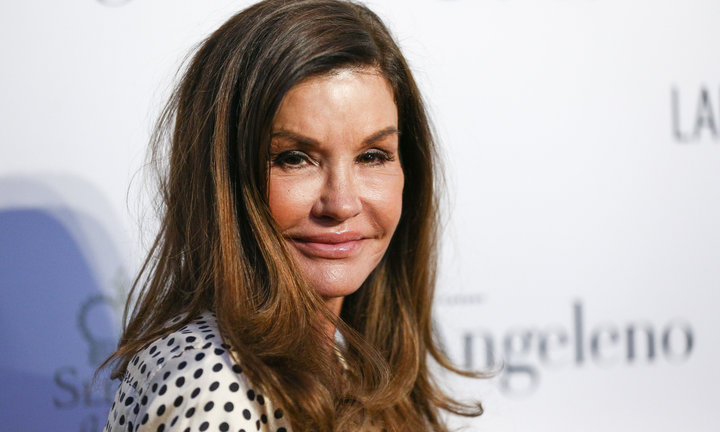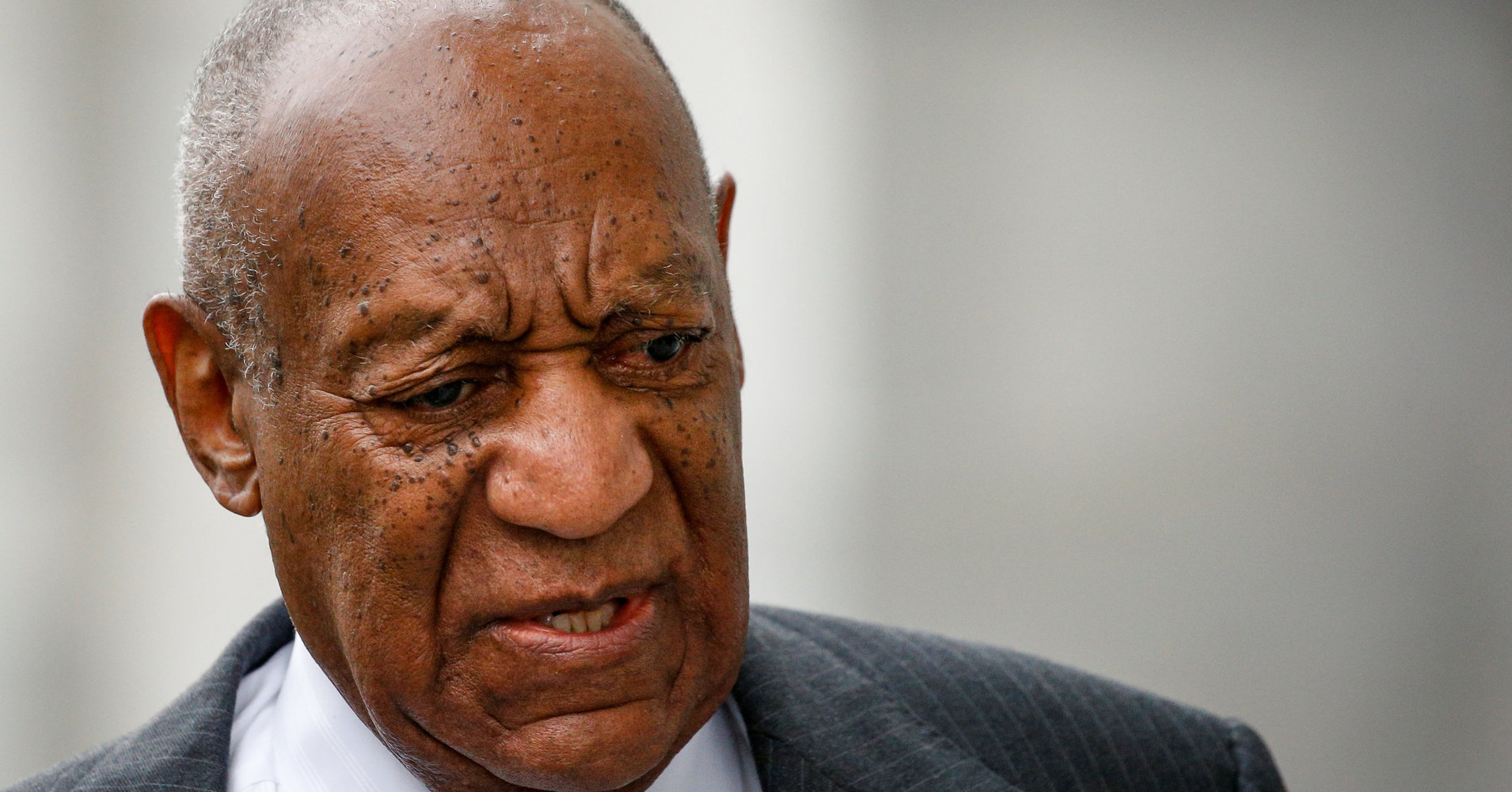[ad_1]
Nearly a year after Bill Cosby’s sexual assault trial ended in a hung jury, the comedian is heading back to court for a retrial.
Cosby, 80, is charged with three counts of aggravated indecent assault. He’s accused of drugging and sexually assaulting Andrea Constand, a former women’s basketball coach at Temple University, in 2004. In June, a jury failed to reach a unanimous decision on the charges and the judge declared a mistrial.
More than 50 women have accused the entertainer of sexual assault, with many saying he drugged and raped them. Cosby has denied all the allegations and is sticking with his not guilty plea from last year.
Cosby’s retrial is the first high-profile sexual assault prosecution in the Me Too era. Here’s a quick primer on a court case sure to capture the attention of the entire country.
When does the retrial begin?
Jury selection began on April 2, but opening statements and testimony (the part everyone will be paying attention to) starts April 9.
Where does the retrial take place?
The retrial will be at the Montgomery County Courthouse in Norristown, Pennsylvania, about a 40-minute drive north of Center City Philadelphia. Cosby’s first trial also took place there. The same judge will preside, Common Pleas Judge Steven T. O’Neill. Cosby’s mansion ― the scene of the alleged crime ― is in Montgomery County.
How long will the retrial take?
O’Neill told potential jurors the retrial will last “easily a month.” That would be twice as long as the first trial. O’Neill announced in March that he will allow five Cosby accusers in addition to Constand to testify for prosecutors trying to prove Cosby’s “prior bad acts.”
What happened during jury selection?
Jury selection in high-profile, high-stakes trials like this can make or break a case for both prosecutors and the defense.
The defense had a hard time finding impartial jurors who haven’t already heard of the allegations against Cosby ― especially since the entire country was exposed to his first trial. Of 120 potential jurors, only 10 told O’Neill that they had not heard of the 50-plus accusations of sexual assault and rape against the comedian. Sixty-eight potential jurors were dismissed right away because they said they had already formed an opinion.
“Fair and impartial ― those are the two most important words of the day,” O’Neill reportedly stressed throughout jury selection.

Another factor working against the defense is the rising Me Too movement. The reckoning has brought down big stars like Harvey Weinstein and Matt Lauer, and has shifted our culture’s perspective on sexual violence. Even last year, when Cosby first went on trial, the climate around sexual assault was very different.
“Since Cosby’s first go-round, all courtroom participants ― jurors, attorneys, judge ― have been immersed in an intensive course on sexual violation,” Deborah Tuerkheimer, a Northwestern University law professor and former prosecutor who specialized in domestic violence cases, told The New York Times.
“The ways in which we evaluate the credibility of survivors has also shifted in important ways, from a default to doubt, to a greater willingness to believe,” Tuerkheimer continued. “And we have been newly schooled in the importance of consent. It will be fascinating to see how this plays out in the courtroom.”
Jury selection concluded on Thursday. Cosby’s jury will consist of 12 people ― 10 white and two black. “Six racially diverse alternate jurors were picked without incident” later in the day, according to The Associated Press. All 12 jurors and six alternates will remain anonymous throughout the trial.
After jury selection wrapped, Andrew Wyatt, a spokesman for Cosby, told reporters he hopes members of the panel can be “fair and impartial” throughout the trial.
Who will testify?
In a big victory for prosecutors, O’Neill ruled in March that five accusers could testify because their stories closely resemble the claims made by Constand. Their testimony will be used as evidence of prior bad acts.
“As the number of victims reporting similar, drug-facilitated sexual assaults by [the] defendant increases, the likelihood that his conduct was unintentional decreases,” prosecutors wrote in court documents. “It is simply a matter of probabilities.”
The judge’s ruling was a sharp departure from last year, when O’Neill rejected prosecutors’ request to present 13 other accusers to show a pattern of predatory behavior. The judge allowed only one person to testify ― a woman named Kelly Johnson, who claimed Cosby drugged and assaulted her in the 1990s.
Johnson will not take the stand again because prosecutors believe the defense poked too many holes in her story during the first trial.
The AP was able to figure out which “prior bad acts” witnesses prosecutors intend to call at the retrial, based on descriptions in court documents:
-
Janice Dickinson is a former supermodel and TV personality who says Cosby drugged and raped her in 1982 after the two had dinner in Lake Tahoe. “The next morning I woke up, and I wasn’t wearing my pajamas,” Dickinson, 63, said in a 2014 interview with ET Online. “Before I woke up in the morning, the last thing I remember was Bill Cosby in a patchwork robe, dropping his robe and getting on top of me. And I remember a lot of pain.” Dickinson also has filed a civil lawsuit against Cosby, saying he defamed her with a statement calling her a liar.
-
Janice Baker-Kinney is a bartender who came out in 2015 with allegations that Cosby drugged and sexually assaulted her at a party in Reno, Nevada, in 1982.
-
Heidi Thomas was a model and aspiring actress living in Denver in 1984 when an agent contacted her and said Cosby wanted to meet her and help her with her career. Thomas traveled to Reno, Nevada, where she met Cosby at a house. She says the two were reading a scene in which her character was drunk, so Cosby gave her a glass of wine. “Thomas says that when she woke up, Cosby was next to her in bed, naked and ‘forcing himself in my mouth,’” a 2015 CNN report reads. “Soon after, Thomas says, Cosby was getting on top of her again and referring to himself in the third person. ‘I’m your friend… your friend is gonna (ejaculate) again,’ Thomas remembers him saying.”
-
Chelan Lasha is a former model who accused Cosby in 2014 of drugging and assaulting her in Las Vegas in 1986, when she was 17 years old. According to Lasha, she met Cosby in his hotel room at the Hilton because he had promised to introduce her to someone at the Ford Modeling Agency. Once the two were alone, Lasha says Cosby gave her two shots of liquor and a blue pill ― which he told her was an antihistamine. The next thing Lasha remembered was Cosby “humping her leg” and “grunting” before she blacked out, according to New York magazine.
-
Lise-Lotte Lublin says she met Cosby in 1989 through her modeling agency, when she was 23. On their third meeting, Lublin says Cosby invited her to his hotel room in Las Vegas to help her with her acting. Once there, Cosby fixed her a drink and insisted she drink it, although Lublin said she was not a big drinker. Within minutes, Lublin said, she began feeling dizzy and disoriented, then blacked out. Lublin went public with her story in 2015, and says she believes Cosby drugged and then sexually assaulted her.
Court documents suggest prosecutors may call more than a dozen other people to the stand to corroborate the women’s stories.

Cosby’s defense scored a win when O’Neill ruled this week that Marguerite “Margo” Jackson would be able to testify. Jackson, according to court documents, worked with Constand at Temple University and is expected to tell a story of Constand saying she could make a false rape claim to get money. O’Neill did not allow Jackson to testify in the first trial.
What is the defense strategy?
Cosby’s defense team intends to paint Constand as a gold digger who lied about the assault to extort money from Cosby, a rich and famous man, according to reports. They plan to use Jackson’s testimony and the 2006 civil settlement between Cosby and Constand (which O’Neill also allowed as evidence) to bolster their defense.
District Attorney Kevin R. Steele called Jackson’s story “absurd” in his failed motion to prevent her testimony, adding: “This desperate move to introduce this highly-suspect, hearsay testimony reflects the defendant’s continuing strategy of inserting red herrings to distract from the relevant issues in this case.”
The defense retrial strategy is very different from last year’s, when Cosby’s lawyers attempted to portray Constand as a woman who consensually entered into a sexual relationship with Cosby, got angry with him and then lied about it. Constand is gay and was in a relationship with a woman at the time of the alleged assault.
What is the prosecution strategy?
The prosecutors will bolster Constand’s account with the five “prior bad acts” witnesses, intending to show a pattern of predatory behavior by Cosby.
The strategy is not without risks. Cosby’s lawyers are likely to aggressively cross-examine the women, and any slips could strengthen a defense argument for reasonable doubt.
Will this trial be much different from the first?
The retrial will likely be very different, mainly because of the additional accusers. Their testimony significantly widens the scope of the case beyond what happened between Cosby and Constand.
Additionally, the Me Too movement has likely shifted the mindset of jurors and everyone else involved in the case. The culture has become more inclined to believe women, and that may have an effect in Cosby’s retrial.
[ad_2]
Source link

